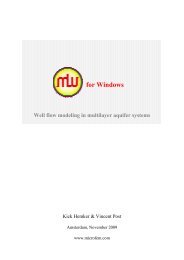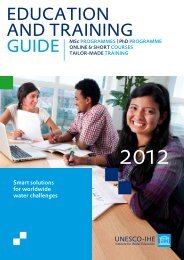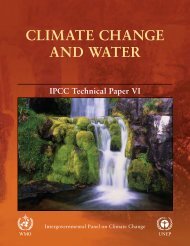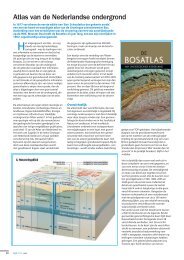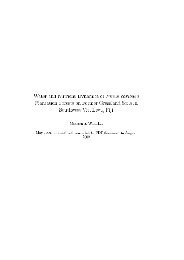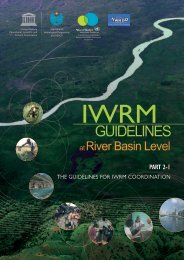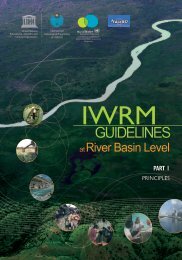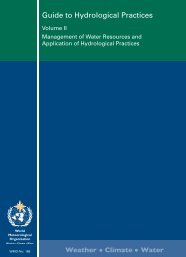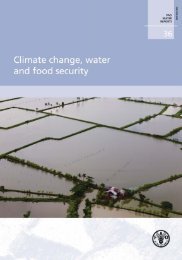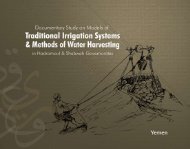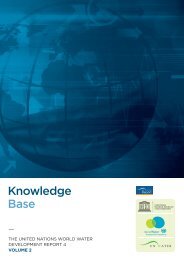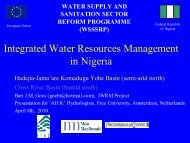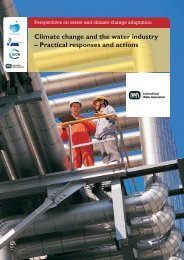Non-renewable groundwater resources: a ... - unesdoc - Unesco
Non-renewable groundwater resources: a ... - unesdoc - Unesco
Non-renewable groundwater resources: a ... - unesdoc - Unesco
- No tags were found...
You also want an ePaper? Increase the reach of your titles
YUMPU automatically turns print PDFs into web optimized ePapers that Google loves.
CHAPTER 5 ■ REGIONAL CASESThe Jwaneng Northern Wellfield,BotswanaPelotshweu PhofuetsileIntroductionBotswana is an arid to semi-arid country with scarce surface and <strong>groundwater</strong> <strong>resources</strong>. Itsrainfall ranges from 550 mm/year in the northern part of the country to 250 mm/year in thesouthwestern part of the country. Despite the increase in use of surface water schemes, mostvillages and a few towns continue to rely on <strong>groundwater</strong> <strong>resources</strong> for water supply becauseof the limited or no supply surface water <strong>resources</strong>. Indications are that <strong>groundwater</strong> miningis inevitably taking place over large areas in Botswana that receive little if any recharge becauseof low and unreliable rainfall.This paper discusses the historical development and management of the Jwaneng NorthernWellfield (JNW) shown in Figure 1. The Jwaneng Northern Wellfield (JNW) is one of thecountry’s major <strong>groundwater</strong> schemes. Its management typifies how many of the <strong>groundwater</strong>schemes in Botswana are being managed.The Jwaneng Northern WellfieldThe JNW has been operated since 1979 when Jwaneng Diamond Mine started operation.Currently the wellfield is producing approximately 9 million cubic meters of water per year. Thewater is used for mining operations and for meeting the needs of the associated mining town.Monitored water levels in boreholes have shown a steady decline of slightly more than 5 meterssince 1979. The quality of the water has remained good with total dissolved solids (TDS) rangingfrom 470 mg/l to 740 mg/l.Once the Jwaneng Northern Wellfield (JNW) scheme started a network was established formonitoring <strong>groundwater</strong> quantity, quality and water levels. The purpose of monitoring was toensure the sustainable operation of the scheme, to safeguard the water rights of local farmers inthe area and to mitigate possible environment impacts as a result of <strong>groundwater</strong> exploitation.The mining company has used <strong>groundwater</strong> modelling as a management tool for predicting<strong>groundwater</strong> levels under alternative management scenarios. The Water Apportionment BoardControl is responsible for ensuring compliance with water rights.Currently there are 28 production boreholes in operation that are supplying water toJwaneng mine and associated township. Groundwater abstraction in 1984 was 5,262,205 m 3while in 2000 it was 8,929,220 m 3 . The cumulative abstraction from 1979 through 2000 was130,790,082 m 3 . The bulk of the water goes to the mine. In 2000 the mine used 83.7% whileTownship water supply was 16.3%. Process water is recycled at the mine and this has the effect of93



